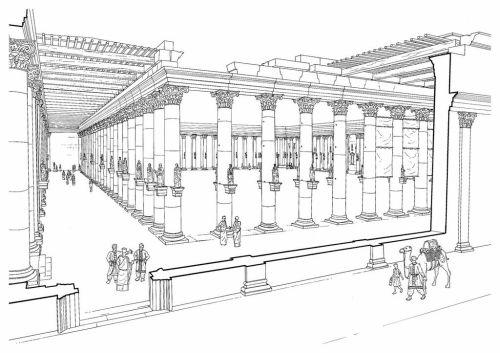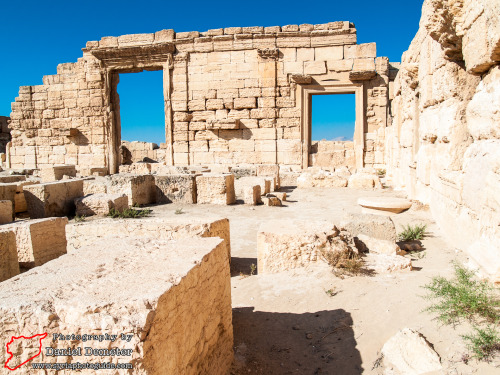Agora & Tariff CourtPalmyra (Tadmor), Syria2nd century CEThe ancient city of Palmyra features an
Agora & Tariff CourtPalmyra (Tadmor), Syria2nd century CEThe ancient city of Palmyra features an impressive agora, or public gathering place. While these were traditionally the center of political and social life in ancient cities, in Palmyra it developed a major commercial role, similar to a caravanserai. It was here that trading caravans would unload and exchange their goods, transforming the complex into a central marketplace.The agora was originally constructed in the second century. The complex measures a remarkable seventy-one by eighty-four meters and has eleven entrances. The exterior walls featured dozens of windows richly decorated with triangular pediments. The open courtyard was once enclosed by porticoes on all four sides. Approximately two hundred pillars supporting the portico originally carried statues of prominent citizens of the city. The northeast portico held statues of Palmyrene and Roman officials, the southeast senators, the northwest military officers, and the southwest merchants and caravan leaders. Attached to the western corner of the complex is a triclinium, or banquet hall. Its walls, decorated with stone carvings, would have originally had benches against them for dining guests.Attached to the southeast of the agora is the tariff court. It was here that caravans would have paid their taxes due to the city. The southwestern wall of the complex features a monumental triple doorway that survives relatively well-preserved. It originally had an exterior portico, but the gateway was partially dismantled in the third century during the construction of Diocletian’s wall. In 1881 a Russian-Armenian geologist and archaeologist, Abamelik-Lazarev, discovered inscriptions of Palmyrene tax law dated to 137 CE at the site. The law regulated the tariffs paid by the merchants for each commodity sold at the marketplace or exported from the city. The inscription is now located at the Hermitage Museum in St. Petersburg, Russia.Sources: 1, 2, 3, 4 -- source link







